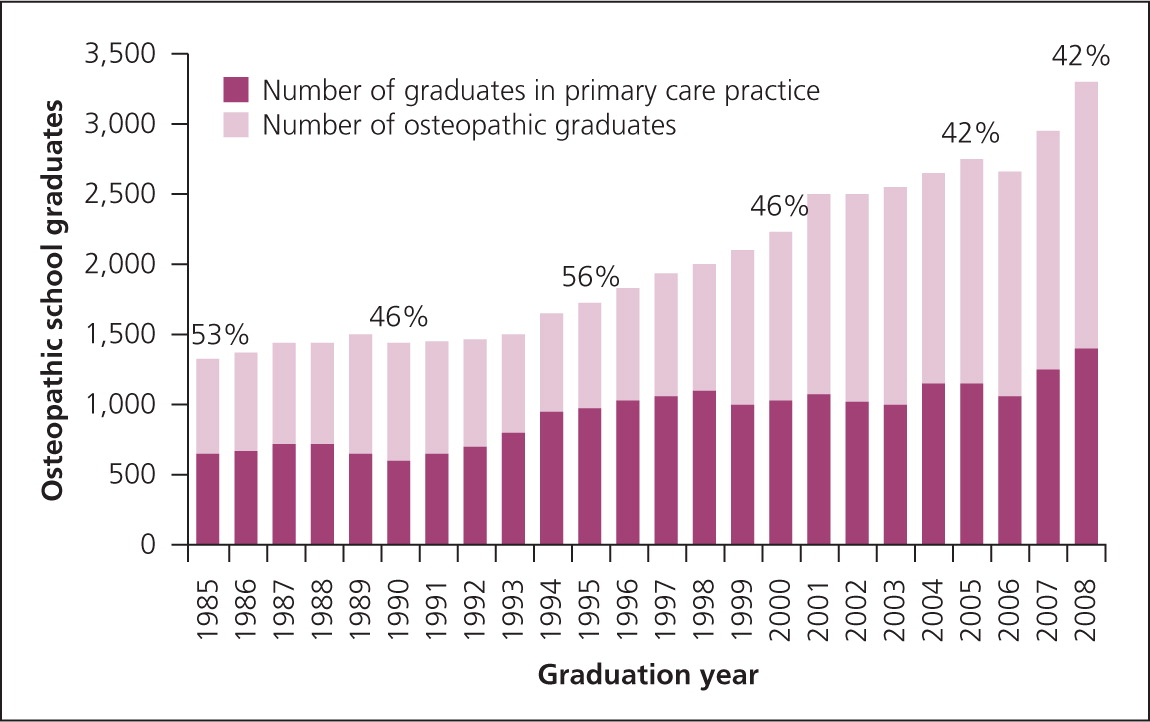
Am Fam Physician. 2015;91(11):756
Related Graham Center Policy One-Pager: Shifting Sources of U.S. Primary Care Physicians
Author disclosure: No relevant financial affiliations.
The expansion of osteopathic medical schools was to be a boon for underserved areas in need of primary care service. However, the impact has thus far been diminished by the decrease in osteopathic graduates engaged in primary care practice. Policy makers and leaders should consider strategies for maintaining a proud tradition of primary care production in a time of looming primary care physician shortage.
Primary care physician production is declining within U.S. medical schools despite a growing primary care workforce shortage.1 Osteopathic medical schools have traditionally provided primary care physicians to U.S. areas with the greatest need, prompting many to advocate for their expansion. Since 2000, the number of osteopathic medical schools in the U.S. has increased from 19 to 34, offering about 1,900 new training positions.2 Osteopathic schools have historically attracted graduates with characteristics typically associated with higher rates of primary care careers, such as older age at matriculation and a rural background.
However, expansion of these schools has not led to a proportionate increase in primary care graduates. Using data from the American Medical Association (AMA) Physician Masterfile and the American Association of Colleges of Osteopathic Medicine, we calculated the number of osteopathic graduates (1985 to 2008) and the percentage going into primary care; 2008 is the most recent year for which active primary care practice can be determined. Absolute numbers of osteopathic physicians in primary care did not increase at a proportional rate compared with the growth in osteopathic students, with a decline in primary care production from a peak of 56% of graduates in 1995 to 42% of graduates in 2005 (Figure 1).

Whether new osteopathic schools will reverse the decline in the proportion of graduates working in primary care is unclear. However, these findings parallel national trends of declining primary care production from allopathic, physician assistant, and nurse practitioner training programs,3 and suggest that osteopathic graduates are not immune to powerful market forces pulling graduates into specialty fields. Maintaining osteopathic leadership in primary care production will require attention to institutional factors such as admissions, tuition, and curricular exposures, as well as broader payment policies that reduce disparities in specialty vs. primary care compensation.
The information and opinions do not necessarily reflect AAFP views or policy.
Series coordinated by Sumi Sexton, MD, Associate Medical Editor.
